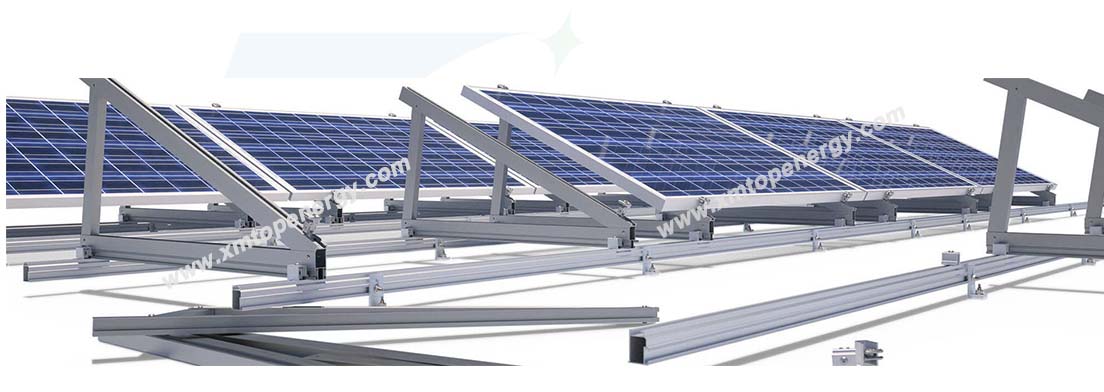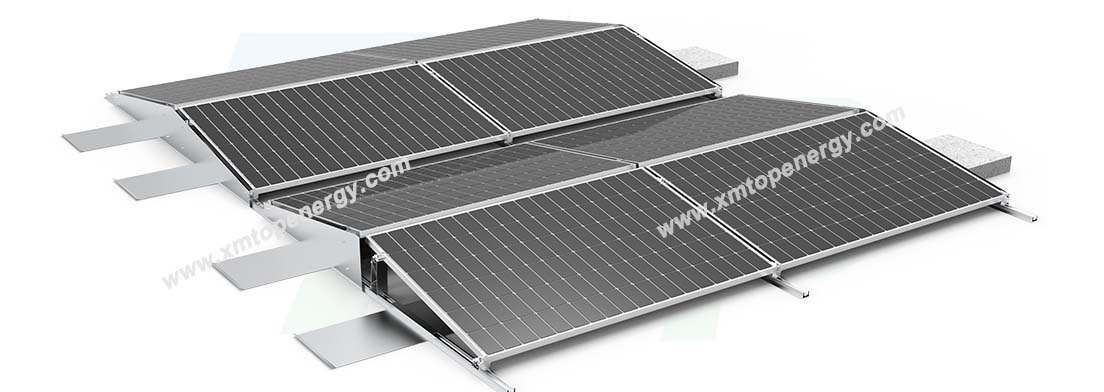When it comes to installing solar panels on flat roofs, one of the most critical engineering challenges is dealing with wind load. Unlike sloped roofs, flat roof installations can be more vulnerable to the forces of wind, which can cause uplift, vibration, and long-term structural stress if not properly managed. In this blog post, we’ll break down how wind load affects flat roof solar systems and what measures installers can take to ensure both safety and performance.

Wind load refers to the force exerted by wind on a structure. For solar installations, it’s a combination of:
Uplift forces (trying to lift panels off the roof)
Lateral forces (pushing panels sideways)
Torsional forces (causing twisting or rotation)
These forces vary depending on factors like building height, geographic location, roof elevation, and even surrounding structures.
Flat roofs don’t benefit from the shielding effect that pitched roofs offer. Instead, they often face more direct exposure to wind, especially around roof edges and corners. This leads to a higher chance of uplift and turbulence, particularly in:
Edge zones – where wind velocity increases
Corner zones – where suction forces are most intense
Parapet walls – which can create vortex effects or pressure differences
Without proper countermeasures, these forces can shift or damage the solar array.

Ballasted systems use weight to hold the array down. These are common for flat roofs to avoid roof penetrations, but require careful calculation to ensure enough weight is distributed evenly without overloading the structure.
Mechanically attached systems use roof anchors or structural fasteners. While more secure, they require waterproofing and increase installation complexity.
Installing wind deflectors on the rear and sides of the array can redirect airflow, reduce uplift pressure, and stabilize the system—especially in high wind zones.
Rows of panels should be spaced to prevent wind tunneling. Orienting the array in line with prevailing winds or using staggered layouts can help distribute pressure more evenly.
Complying with local codes like ASCE 7, EN 1991-1-4, or country-specific wind load standards ensures the system is designed to withstand regional wind risks.

Improperly accounted wind load can lead to:
Panel uplift or displacement
Roof membrane damage
Safety hazards for people below
Insurance and liability issues
In extreme cases, whole sections of an array can become airborne during storms—causing serious structural and legal consequences.
Wind load is a critical design factor in flat roof solar installations, especially in regions prone to high winds or typhoons. Through smart engineering, adherence to standards, and the right combination of ballasting, attachment, and aerodynamics, these risks can be effectively minimized. For any flat roof project, it’s essential to partner with experienced engineers and use validated solar mounting systems tailored to the building’s location and design.

 Xiamen TopFence Co.,Ltd.
Xiamen TopFence Co.,Ltd. No. 77, LingXia South Road, Huli District, Xiamen City, Fujian, China
No. 77, LingXia South Road, Huli District, Xiamen City, Fujian, China Tel: +8613365923720
Tel: +8613365923720
 Email: info@xmtopfence.com
Email: info@xmtopfence.com
 IPv6 network supported Sitemap
| XML
| Blog
| Privacy Policy
IPv6 network supported Sitemap
| XML
| Blog
| Privacy Policy


